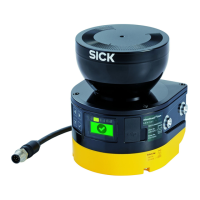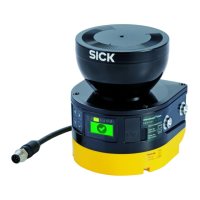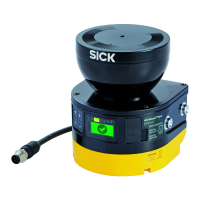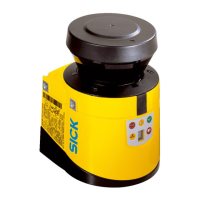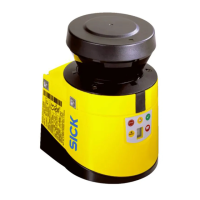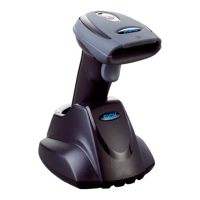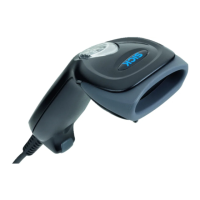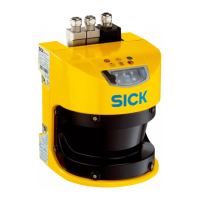Inputs used
If y
ou want to use static control inputs for monitoring case switching, then select the
inputs here.
In antivalent evaluation, the 2 channels of each static control input must always be
inverted, even if the status of a control input in a monitoring case is random. If it is not
inverted, all safety outputs switch to the OFF state and the device displays a fault.
Input delay
If y
ou use static control inputs for monitoring case switching, you can select a delay for
the inputs.
If your control device, which you use to switch the static control inputs, cannot switch
to the appropriate input condition within 12 ms (for example because of the switch’s
bounce times), you must configure an input delay. For the input delay, select a time
in which your control device can switch in a defined way to a corresponding input
condition. You can increase the delay time incrementally.
The following empirical values exist for the switching time using various methods:
Table 17: Empirical values for the required input delay
Switching method Required input delay
Electronic switching via control, complementary electronic outputs
w
ith 0 ms to 12 ms bounce time
12 ms
Tactile controls (relays) 30 ms to 150 ms
Control via independent sensors 130 ms to 480 ms
Also, take account of the notes relating to when to switch between monitoring cases
(see "Monitoring case switching time", page 32).
Use speed
If you want to use the speed for monitoring case switching or as an additional condition,
activate this option.
Further topics
•
"St
atic control inputs", page 67
7.14.1.1 Configure switching sequence
Overview
Y
ou can specify the order in which the monitoring cases can be called.
You can specify one or two subsequent monitoring cases for each monitoring event.
If you do not specify a subsequent monitoring case for a monitoring case, then any
monitoring case may follow.
If input conditions are present that do not call up any of the defined subsequent
monitoring cases, the safety laser scanner switches all safety outputs to the OFF state.
You can specify the order of the monitoring cases as a process or in individual steps.
Process
Y
ou define one or more sequences. You can use a sequence to map the sequence of
work steps for your machine.
In all sequences, you can define a maximum of two subsequent monitoring cases for
each monitoring case.
7 C
ONFIGURATION
136
O P E R A T I N G I N S T R U C T I O N S | microScan3 Pro I/O 8025424/1ELL/2022-01-21 | SICK
Subject to change without notice
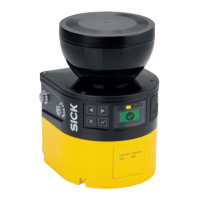
